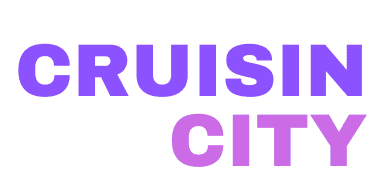
17 Nov The Resurgence of Old-School Skateboards
Speaking about ‘trends’ in skateboarding isn’t always easy (and can even be pretty controversial).
The ever-changing nature of skateboarding means that things are constantly coming and going. In addition, the now global popularity means that what’s cool in California might be totally ‘out’ on the East Coast, Europe, or Asia.
However, there’s always something that has and will remain constant – the roots of skateboarding.
No matter how technical street skating gets or how many spins are accomplished on the mega ramp, skateboarding began with surfers nailing roller skates on planks of wood.
The very essence of skateboarding in its earliest days was creativity – something that will always be important to skating. From the beginning, skaters heavily modified the shape of their boards for performance and just to make them their own. Individuality was key, from your graphic to your deck shape and even your clothes.

In the late 70’s and early 80’s, we saw the emergence of professional skateboarders and pro model skate products. Pro graphics were often designed by the skaters themselves and many pro models could simply be recognized by the shape of the deck alone.
Eventually, in the late 80’s, skateboarding began to undergo an intense progression, specifically in the streets. This led to increasingly performance-driven popsicle deck shapes, allowing for greater versatility and a wider range of tricks. This era was the beginning of the amazingly advanced and technical skating we know today.
But, it came at the cost of individuality and some of the aspects that made skating so unique to begin with.The 90’s and early 2000’s, we saw these ‘shaped’ decks fade away and eventually gain their reputation as being ‘old-school’. They didn’t totally disappear, but they were known to many as being ‘outdated’ and even as a ‘fun board’ that you rode when you weren’t skating your ‘real’ board.
Some may not even be aware, but several brands like Black Label continued to make shaped decks throughout this era. The problem was, very few kids would buy them and thus very few skateshops would order them.

Now to present times. We’re living in an era of skateboarding where modern street skaters are releasing entire video parts while skating only old-school decks that came out in the 80’s.
Nearly every ‘legacy brand’ like Powell-Peralta, Santa Cruz, and H-Street have entire collections of re-issue deck models that are on shelves alongside trending street brands.
The massive popularity of brands like Welcome Skateboards are also an incredible example in this mentality shift towards shaped decks.
Heck, the fact that cruisincity.com even exists is a testament to this popularity! But, this ‘mentality’ is beginning to surpass the idea that it’s only a ‘trend’, like an Osiris D3 phase or big pants/small wheels.
The resurgence of old-school skateboards and shaped decks are nearing the ten-year mark since they began re-appearing in skateshops across the world – and they’re only showing up more.
There are many reasons that could explain the return in popularity of old-school and shaped skateboard decks – but if we had to name one single reason, it’s that people will always be fascinated by the past. Classic cars will always be cool. Old artwork will always be cool.
And old-school skateboards help us learn about our skateboard brothers that existed before us. They’re an important aspect of skateboarding to preserve and enjoy.
Skateboarding will never stop progressing in all its forms, but these old-school boards help us to never forget where we came from.
“Dude, let’s face it—skateboarding isn’t a big deal. It really isn’t. It’s hanging out with friends at a curb and drinking a Coke, talking about the girl you like or how much school sucks or how rad your board looks or whatever. And that’s what weird shaped boards mean, man. They’re a starting point to remember that skating is supposed to be fun.” – John Lucero, Jenkem Magazine, 2014
Source: Jenkem
Text by Skatetexter





Sorry, the comment form is closed at this time.